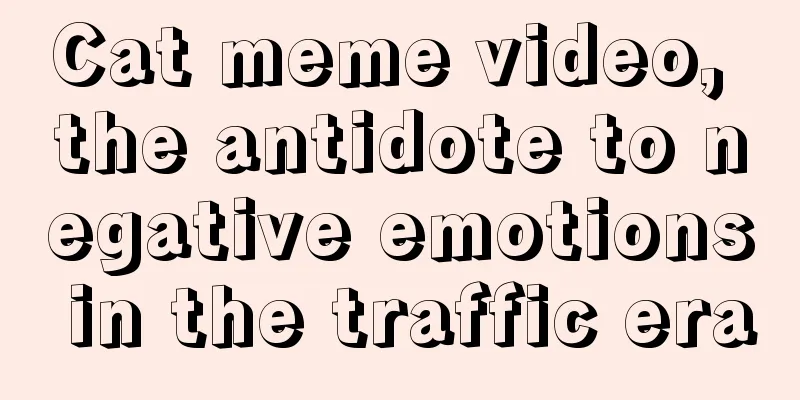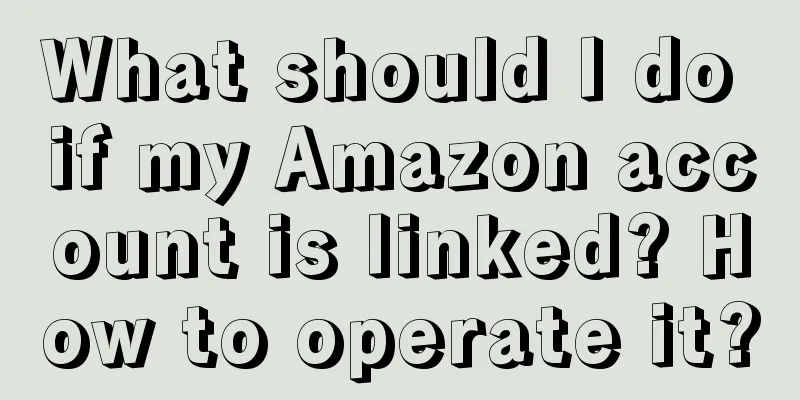Cat meme video, the antidote to negative emotions in the traffic era

Hey, this emoticon is good. I saved it. In the context of WeChat social networking, I believe everyone has encountered such a scenario. When interacting with people of similar age, the expressions we use are pretty much the same. The fresher and more interesting emoticon packs are usually obtained from the younger generation. Recently, I got a lot of cat and dog emojis from the post-00s. This half-dead look is very consistent with the mood of office workers at work every day. After some searching, it turns out that this set of emoticons has a unique name, "cat meme". It is a popular emoticon package among Generation Z, and even those born in the 10s and 20s. They are usually used to make videos. If the plot is interesting, the pace is brisk, and the cat meme is used appropriately, then there will be a comment under the video saying, "This video is guaranteed to be a hit," which means it will become a hit, and traffic will naturally flock to it. So why have these cats and dogs replaced panda heads, Yao Ming emoticons, and Jacky Cheung emoticons to become the darlings of the younger generation? 1. Close intergenerational relations and achieve group identityEmoticons are a product of the Web2.0 era of Internet text and image interaction. Posting on Baidu Tieba, Weibo, and Douban was the mainstream surfing method for young people at that time. From the Web2.0 era of Internet text and image interaction to the Web3.0 era of Internet short video interaction, emoticons have low usage barriers, high communication efficiency, and the ability to effectively convey emotional values, and are gradually becoming a communication tool for middle-aged and elderly people. Young people usually like to use funny and cute emoticons, while the elderly like emoticons with various flowers and auspicious blessings. In certain social communication scenarios, young people will also mix and use multiple emoticons to enhance communication between both parties. Young people who like the culture of different groups will use different types of emoticon packages. For example, those born in the 2000s and 20s prefer Xiaoba, while those who like the two-dimensional otaku culture like anime character emoticon packages. Those born in the 1990s will collect more violent comics emoticon packages, and those who like Taoist culture also have some specific emoticon packages. Actively using emoticons with group attributes is also a key step in integrating into group culture. It will form a common psychological and emotional identity among the group, and give them a sense of belonging, trust, and support. In this era where everyone can use and create emoticons, everyone has the potential to be the protagonist of an emoticon. The emergence and rapid spread of a certain type of emoticon on social media is because it carries the values of a group's identity and the mark of an era. Compared with those born in the 1990s, the emoticons of Generation Z, those born in the 2010s, and those born in the 2020s are updated faster and spread more widely on the Internet. The group emotions that emoticons rely on are also inconsistent in different eras. 2. Imbalance between virtual and real social interactions, emotional changesI sampled 1,000 videos made with emoticons from the three major platforms where young people gather today, Tik Tok, Xiaohongshu, and Bilibili, and conducted a frequency sampling analysis based on the titles, contents, and frequently appearing words in the comments of the videos. The emotions used by the post-90s generation are mostly funny, self-deprecating, or ironic about real life, while the emotions used by the post-00s generation, i.e. Generation Z, the 10s, and even the 20s, are mostly depression, resentment, confusion, and anxiety about the current living environment. This is especially reflected in the emoticon videos which are based on videos of their childhood interactions with their family. Those born in the 1990s mostly use the comic strip Rage Comics as characters, and most of the videos present funny and embarrassing moments of their family interactions. Generation Z is inspired by memories of psychological trauma inflicted on them by their current or past parents, and may even have causes for depression. They often use cat memes to create characters, mostly depicting their own situations and mental states. There is also a blogger on Xiaohongshu who specializes in making cat meme emoticon packages. He said: On today's Internet full of hostility, cat meme emoticon packages are kind-hearted jokes that are unique to this generation. The use of emoticons and pseudonyms reduces the chances of real people encountering cyber violence, and provides a way to express such negative emotions. At the same time, in order to avoid content path errors, based on the approximate age range of bloggers, I also sampled 1,000 cat meme videos made by those born after 1990. After comprehensive data analysis, I found that most of the cat meme videos made by those born after 1990 are anonymous industry anecdotes, such as the B station blogger "Spring Bear". So why do young people who surf the Internet have different types of emotions? From the perspective of personal cognition, it can be inferred that the reality and network environment that the post-90s generation has lived in since childhood have been advancing with the development of society. China was not officially connected to the international Internet until 1994, transitioning from developed regions to backward regions. It was not until 2017 that the Internet in China was truly popularized. During these decades, the post-90s generation is the period from adolescence to young adulthood. Most of them did not have much exposure to the Internet when they were young. The first time many of them came into contact with a computer was probably in a microcomputer class. The first time they felt the large-scale application of emoticons was the "Emperor Bar Expedition", which was a fight for the unification of the motherland. Apart from computer classes, one has to wait until middle school or the later stages of elementary school to be able to use smartphones and keep up with the Web 2.0 graphic era. In this way, daily interpersonal interactions take place in reality, and naturally the starting point of emotions is family and friends. In such a living environment, the post-90s generation has a relatively positive initial impression of the Internet. They believe that computers are a tool for learning and, when they grow up, a tool for making money. Society is gradually transitioning to the Web3.0 short video era. Most Generation Zs have access to all kinds of electronic products since their childhood. Electronic products have even become virtual babysitters for those born in their teens and 20s, taking care of their emotions while they are queuing or gathering. Premature exposure to the Internet is also gradually affecting the formation of Generation Z’s values, world view, and outlook on life. Especially with the declining birth rate, it is almost impossible to find playmates of the same age in cities and rural areas. Parents who are busy scrolling through their phones are unable to meet the emotional demands of the new generation. During the period of childhood idol formation between the ages of 8 and 12, the new generation's emotional expression points shift from real-life social interactions to virtual designs. The unpredictable nature of the online world and the modern, fast-food short video content are bright and beautiful on the surface, but actually loose and dilapidated on the inside. In such an environment, the new generation is more likely to find "misplaced idols" and are more likely to develop a series of emotional problems in the process of following "idols". The contraction of real social interaction and the continuous expansion of virtual social interaction may be the direct factors leading to the emotional changes in the two generations. But on the other hand, the feedback from the post-90s and Generation Z on the depression at the social level is completely different. Most of the post-90s generation silently digests the various emotions they receive from the outside world, and some of them may choose to express their emotions in the form of writing diaries. Generation Z, on the other hand, expresses their inner thoughts to the outside world by making cat meme videos. 3. Textual aphasia, venting negative emotionsIn today's fast-food age, everything is pursued fast, watch videos at double speed, order pre-prepared meals, seek shortcuts in side jobs, falsify data on resumes, and make PPTs of performance results. It seems that everything needs to be equipped with a fast-forward button. It takes a lot of energy and time to produce long texts and pictures, so those born in the 1990s choose to "collectively lose their voice" in the face of society, dragging their tired bodies. The new generation takes the Internet as their daily life as eating and drinking. They choose to create group emoticons to show everything they encounter, and use emoticons to replace words to make sounds on the Internet and vent various emotions. Therefore, the cyberspace carries the emotions expressed by the new generation, as well as the funny and self-deprecating emotions of most post-90s, or other content creators active in different social media who hope to use content to harness emotions and create wealth. 4. Emotional value is the origin of trafficEvery day we open our eyes, open our phones and connect to the Internet, browsing content on different social platforms, watching funny clips on Douyin, reading family stories on Xiaohongshu, and watching cat meme videos on Bilibili. While browsing content, people are also gaining certain emotions and feelings. I talked about different images when discussing the connection between popular works and imagery. This is the emotional value of our consumption on the Internet. Mastering the code to produce hit content also means getting the switch of the traffic pool. The opposition between men and women, emotional healing, metaphysics and cultivation, thick black and evil once occupied the starting point of traffic. There are also some popular passwords made up by different social platforms, which are actually information spam. As mentioned above, most of people’s social interactions have shifted from reality to virtual networks. Therefore, if you want to gain traffic, it is imperative to satisfy people’s diverse emotional values. The key to the next era of traffic belongs to content creators who can quickly change their perspectives, from "being able to understand me" to "being able to empathize with me" in creating content for users, and packaging positive emotional values into scenario-based emotional products. V. ConclusionWhen chatting online across the screen, people's space for expression is very limited, but emoticons can well make up for the lack of expression. With the continuous development of the times and society, emoticons have also become a tool for different groups to express their emotions, and can even be transformed into emoticon videos, providing an outlet for negative emotions. With the frequent occurrence of social problems, people are inevitably infected with hostility in cyberspace. Creating opposing public opinions and stimulating large-scale emotional events has become a profit-making tool for many organizations and individuals. If you feel anxious, hesitant, lost or even bored, you may choose to put down your phone and read a book, meet a friend, or take a walk in nature. Don't let your mind become a racetrack for other people's thoughts. The next era of traffic belongs to content creators who can regulate emotional value, but a peaceful heart belongs only to you. |
<<: With the addition of video accounts, the wave of local life has become even bigger
>>: Kimi's way of making money is so abstract...
Recommend
Live streaming has brought e-commerce into the "shopping era"
Nowadays, people shop more online, but they still ...
Do short video platforms need to be “anti-addiction”?
While adults are chatting, children are watching s...
How to reduce the weight of short video editing and secondary creation?
Secondary creation can give new life to the origin...
Creating a hot-selling product: creating a trend or chasing a trend
For companies that sell products, a hit product me...
Is the Shopee e-commerce platform profitable? How much is the income?
Now more and more merchants are opening stores on ...
How to do Wish? How to operate a product?
As an international shopping platform, Wish has a ...
What data does Amazon usually refer to when it talks about traffic?
On Amazon, we often talk about whether the store’s...
The brand’s sales exceeded 1.5 billion, and it has been ranked first in maternal and infant products for five consecutive years. What is so good about Manxi’s private domain operations?
How did Manxi operate its private domain to mainta...
Can one person run Shopee? How to do it?
Nowadays, more and more people realize that starti...
How to get new traffic on Xiaohongshu as the precise crowd has reached the bottom? Unlock new crowds and new scenarios at low cost!
This article will analyze two typical cases - Garn...
It’s scary. Why do all the copywriting nowadays seem to be from the same mother?
This article explores the common problems in moder...
Does Wish need to pay a deposit? What are the requirements?
Everyone has heard of the Wish platform. Since e-c...
We analyzed the top 10 drama experts and 60+ brand customers and uncovered the secrets of "drama seeding".
In 2023, brands are enthusiastic about investing i...
Six ways to play with a food account, each one can earn money!
There are many food accounts on self-media platfor...
A method to quickly identify the intention of interview questions
This article reveals the two core considerations o...









